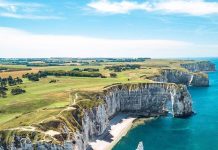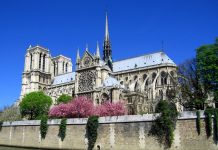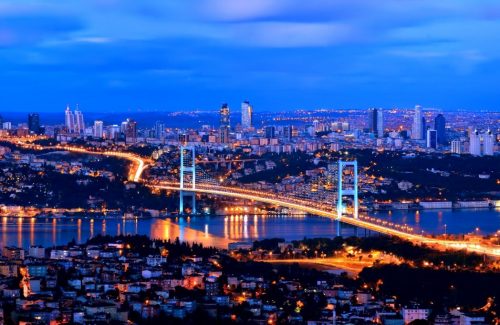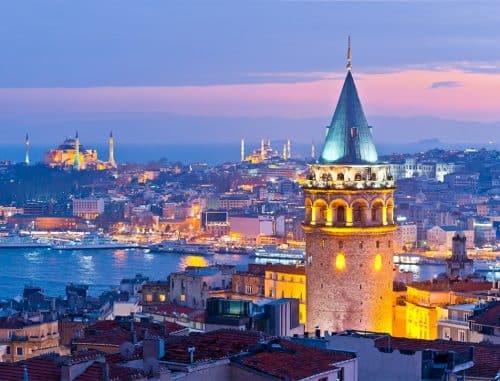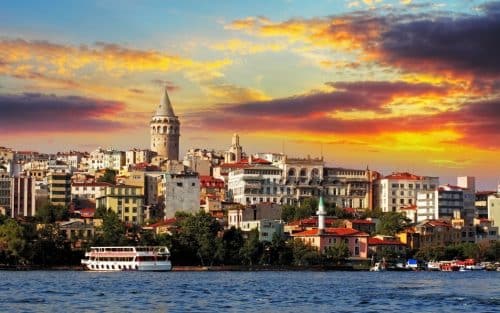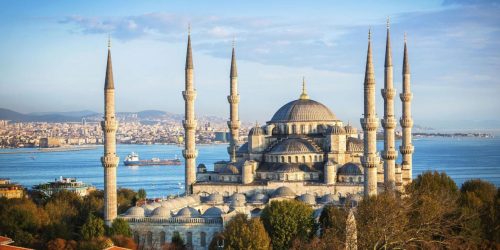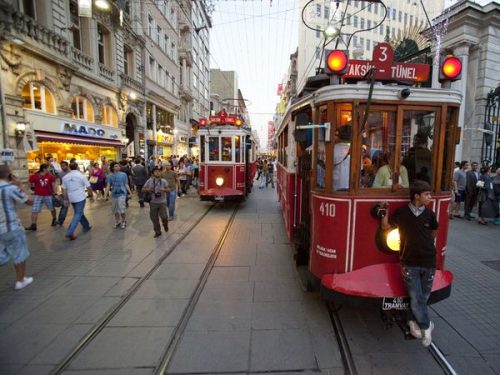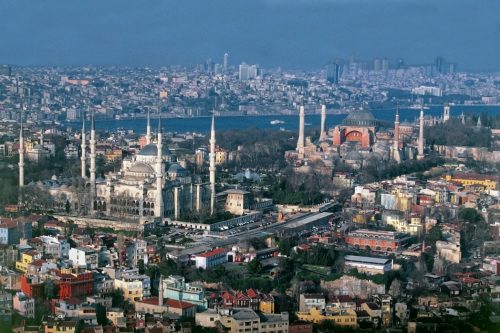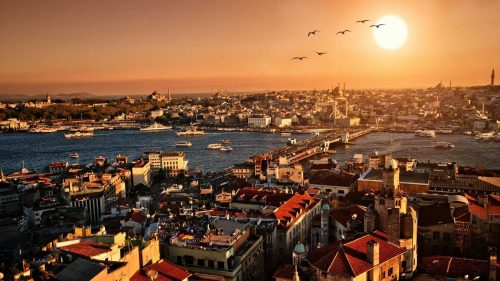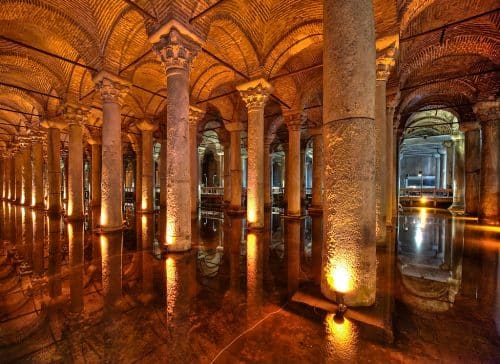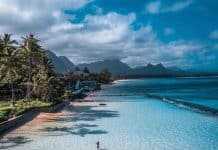Istanbul is a city of 14 million people, and growing. It was the headquarters of the Ottoman Empire from 1453 until its collapse. Now it’s a major city of Turkey and an economical hub. The European side of the City contains most of the major tourist attractions, while the expansion of Istanbul has been largely across the Bosphorus in Asia.
There are two international airports serving the city. The majority of tourists will look first to Ataturk Airport on the European side. There is a metro link from the airport into Taksim Square, the heart of Istanbul’s nightlife and a popular place for booking hotel accommodation. There are plenty of taxis with metered fares, trams and buses serving this hectic, but iconic city.
The Airport on the Asian side, Sabiha Gokcen, is expanding all the time, though when traffic is busy, the bus, taking visitors across to the European side of the City will take more than an hour. There are plans for a third airport in the coming years.
Sultanahmet
The District of Sultanahmet is the place to go if your time is limited. It has plenty of hotels, bars and restaurants and one of those, Sultanahmet Koftesi (restaurant) will soon celebrate its Centenary; opening in 1920. It was three years old when the Turkish Republic was announced. Sultanahmet Koftesi is a great place for lunch when enjoying the nearby landmarks, which are the first to see when visiting Istanbul. You can easily walk between them.
Hagia Sophia Museum

This is a museum today, but in its time, has been a cathedral and a mosque. It was built in the 6th Century by the Byzantine Emperor Justinian. When the Ottomans took Constantinople, it immediately became a mosque and remained so until 1931. It was closed for renovation in 1931 and reopened four years later as a museum.
Blue Mosque
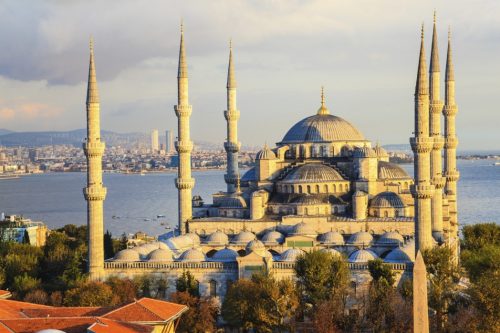
This mosque just a couple of minutes’ walk away was inspired by the architecture of Hagia Sophia. It was built early in the 17th Century by Ahmad I and hence became the main mosque in Istanbul. Its blue interior is stunning; thousands of tiles and mosaics, 200 glass windows, with plenty of decorations, often flowers, trees or fruit.
Topkapi Palace
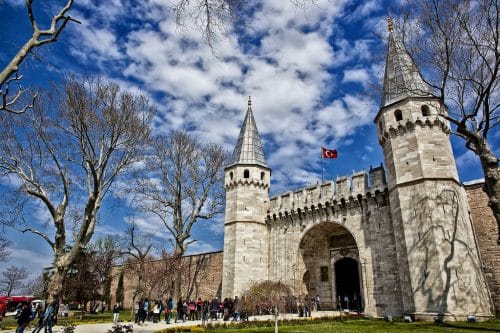 This home of the Ottoman Emperors, a UNESCO World Heritage site, is in the same neighborhood. It was home, until the Dolmabahce Palace was built in Besiktas in the 19th Century. Topkapi palace overlooks the Golden Horn, in beautiful gardens with many wonderful exhibits in its museums, the Treasury, especially, the Harem and the quarters of the Emperor’s mother.
This home of the Ottoman Emperors, a UNESCO World Heritage site, is in the same neighborhood. It was home, until the Dolmabahce Palace was built in Besiktas in the 19th Century. Topkapi palace overlooks the Golden Horn, in beautiful gardens with many wonderful exhibits in its museums, the Treasury, especially, the Harem and the quarters of the Emperor’s mother.
Dolmabahce Palace
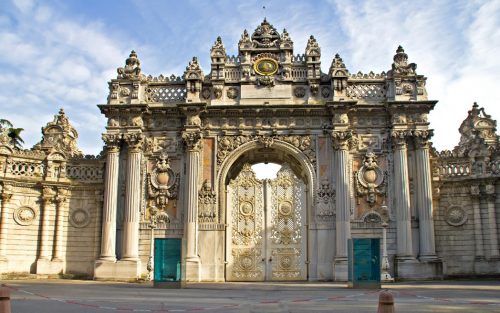 The Emperors moved to this new palace on the Bosphorus in the 19th Century. It was filled with the best of what European fashion could offer. Amongst the impressive features are the crystal chandelier, Irish and weighing 4 tonnes, a match for any chandelier in the world.
The Emperors moved to this new palace on the Bosphorus in the 19th Century. It was filled with the best of what European fashion could offer. Amongst the impressive features are the crystal chandelier, Irish and weighing 4 tonnes, a match for any chandelier in the world.
Grand Bazaar
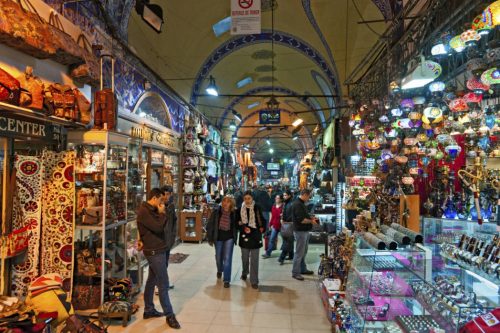
Istanbul has plenty of modern shopping centers, but in many ways the highlight of shopping in the City is the Grand Bazaar. There are over 3,000 shops in 60 streets and although this is only as an estimate, it is thought to attract almost 100 million people a year. It certainly employs plenty; over 25,000 at the last count.
It is in Fatih, again not far from Sultanahmet; there is not much the Grand Bazaar does not sell.
Justinian Cistern
The underground water system was built by the Roman Emperor Justinian and remains a fascinating place to visit. It has been used by film makers in the past and has some full-time inhabitants; golden carp swimming in the waters. It is down a side street no distance from the two great religious structures of Sultanhmet.
The Bosphorus
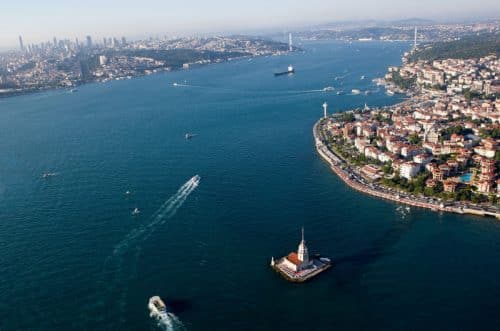 One of the best ways to enjoy the Istanbul skyline is to take a cruise on the Bosphorus. It is a working waterway with ferries crisscrossing, full of passengers and cars that find it a quick way to get around than the busy roads. The Bosphorus links the Black Sea with the Sea of Marmara, and ultimately the Aegean so it is extremely busy itself.
One of the best ways to enjoy the Istanbul skyline is to take a cruise on the Bosphorus. It is a working waterway with ferries crisscrossing, full of passengers and cars that find it a quick way to get around than the busy roads. The Bosphorus links the Black Sea with the Sea of Marmara, and ultimately the Aegean so it is extremely busy itself.

